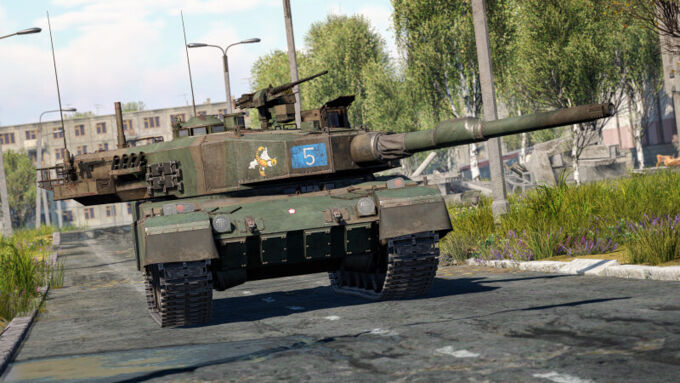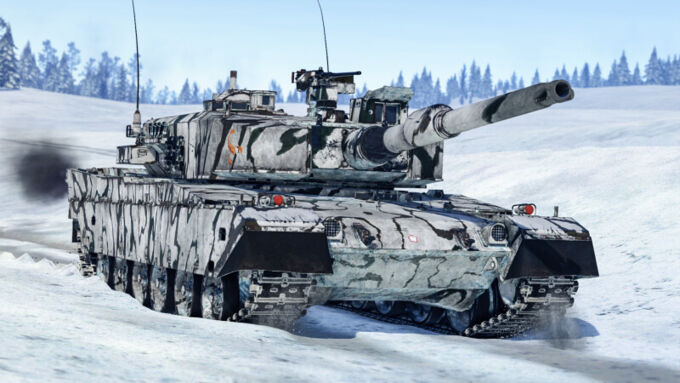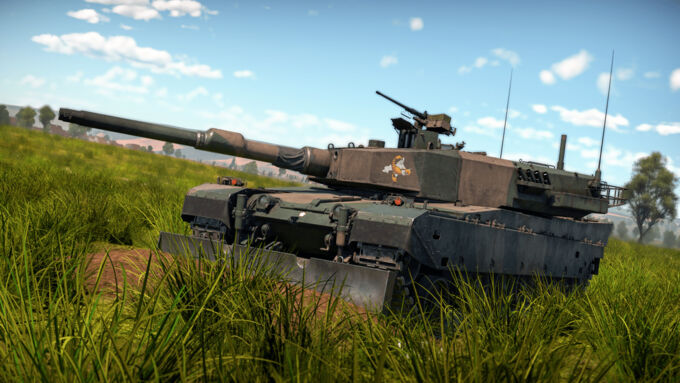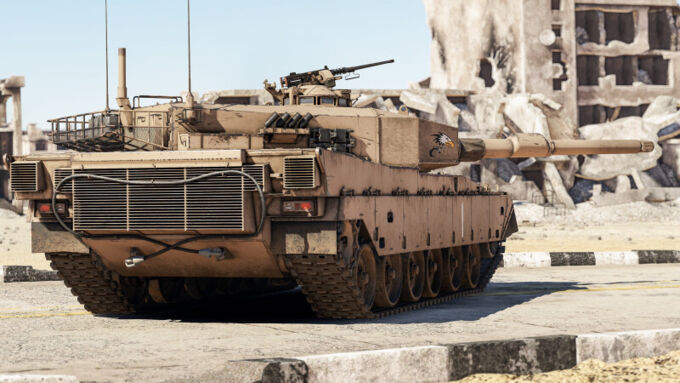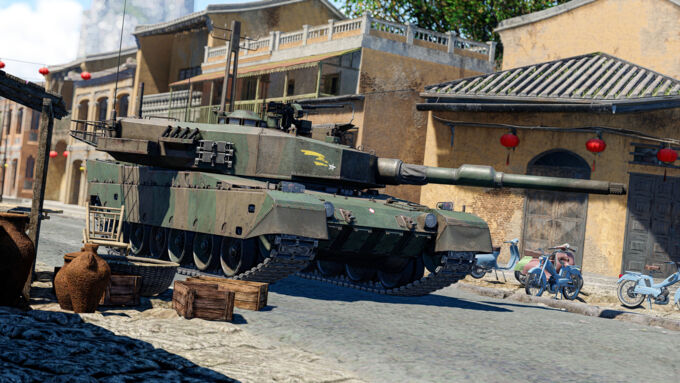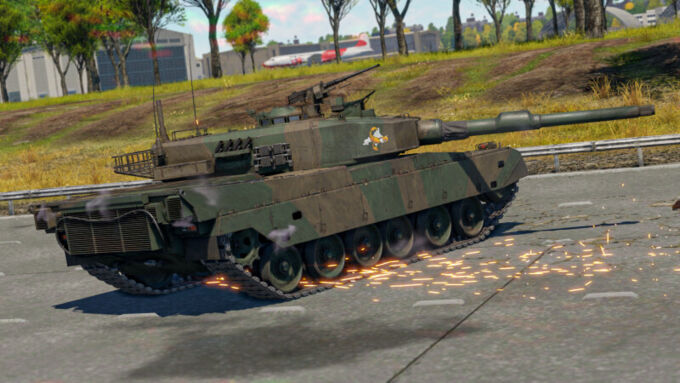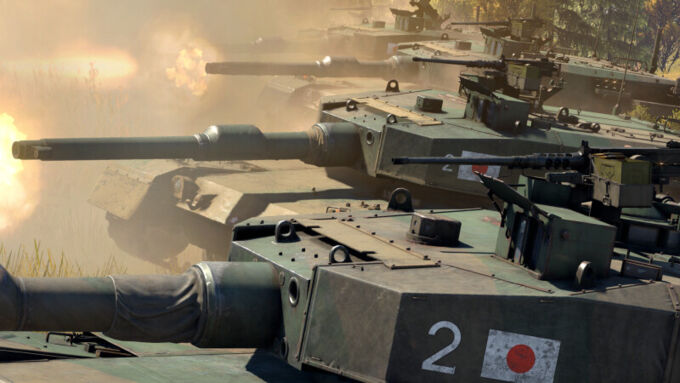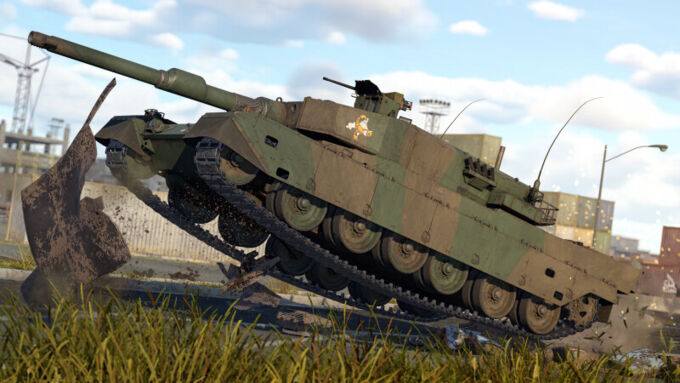The Type 90 (90式戦車) is a third-generation main battle tank (MBT) developed by Mitsubishi Heavy Industries for the Japanese Ground Self-Defense Force (JGSDF). Introduced in 1990 to replace the ageing Type 61 and Type 74, it was designed to counter modern Soviet tanks like the T-72 and compete with Western MBTs such as the M1 Abrams and Leopard 2. Armed with a 120 mm L/44 smoothbore gun, it reflects the standard firepower of Gen 3 tanks. Though still in service, the Type 90 is being supplemented & gradually phased out in favour of the lighter yet more advanced Type 10, shifting as the Japanese Gen 3.5 MBT.
| Pros | Cons |
|---|---|
| 4-Second autoloaded 120 mm cannon | 19-shell autoloader is quickly depleted and slow to replenish |
| Excellent mobility, High power-to-weight ratio and automatic transmission | Comparatively weak armour to common-faced vehicles |
| Hydropneumatic suspension allows the tank to hide behind low ridges and compensating for its limited -7° gun depression | Comparatively slow turret traverse and gun adjustment, with limited elevation/depression angles unless suspension is used |
Mobility
The Type 90 is powered by a 1,500 hp 10-cylinder two-stroke diesel engine, giving it an impressive power-to-weight ratio of 29.88 with a relatively light weight of 50.2 tonnes. This allows the Type 90 to reach cap points quickly and easily manoeuvre into flanking or advantageous positions. Its automatic transmission (7 forward, 2 reverse gears) limits its top speed to 72 km/h forward and -33 km/h backwards in RB/SB, which it achieves effortlessly on-road. Additionally, its hydropneumatic suspension adjusts ride height and angle, aiding traction on uneven surfaces.
Main armament
The Type 90's 120 mm L/44 cannon, a license-built Rheinmetall design, shares the accuracy and firepower of its counterparts on the Leopard 2 and M1A1/M1A2, with the major added benefit of an autoloader. This ensures a consistent 4-second reload time, faster than the manually loaded speeds of other L/44-equipped vehicles, and unaffected by crew losses or fires. The Type 90 fires two rounds: the JM33 APFSDS (based on NATO's DM33) and JM12A1 HEAT-FS (based on DM12A1), both capable of penetrating most opponents. However, precise targeting of weak points is essential against end-line MBTs of both NATO & PACT nations.
The autoloader enables the Type 90 to maintain rapid-fire, allowing for effective suppression and quick follow-up shots, outpacing any full-sized cannons it faces except autocannon-equipped IFVs and the HSTV-L. However, the autoloader has a significant drawback: its 19-round capacity can deplete quickly during prolonged engagements or when multiple shots are needed to secure kills. Replenishing the rack takes considerable time, especially if the loader is incapacitated. Additionally, if the ammo rack is hit, even with blowout panels protecting the crew, the entire reserve will be lost, leaving the gun inoperable until the rack is refilled.
Usage in battles
Everything around the Type 90 revolves around its excellent mobility and rapid fire rate. Unfortunately, the Type 90 isn't particularly durable when it comes to absorbing hits; any shot will likely cause significant damage to its modules or crew. As a result, the Type 90 is best suited to flanking positions, with its impressive mobility only outdone by high-speed-focused MBTs like the Ariete AMV. The Type 90 can also act as a sniper, using its Gen 1 thermals and Laser Rangefinder to acquire targets from a distance. When threatened, the Type 90 can rely on its LWS to cue smoke and quickly reposition for safety from either Laser-guided aerial munitions or another MBT queueing up a ranged shot.
A more daring tactic for the Type 90 is brawling, this is a risky strategy, as the Type 90's armour simply isn't up to the task. However, the tank’s rapid reload speed—allowing it to get two shots on any MBT target before retaliation—makes the first shot crucial, whether that means baiting the enemy or focusing on disabling key components like the gunner, barrel, or mobility. The follow-up shot(s) can quickly then be aimed at securing the kill.
History
Development of the Type 90 began almost immediately after the introduction of the Type 74 into service, with the Japanese High Command already looking for a superior replacement. A central aspect of the new machine would have to be the ability to take on and defeat the new Soviet T-72 main battle tank. With that in mind, Japanese engineers began working on a prototype design, which would see completion in 1980. Two prototypes of this initial design were built, tested and improved upon between 1980 - 1986.
Testing resumed in 1986 with a second batch of four prototype vehicles, featuring a number of improvements over the initial two. The most significant change included the replacement of a Japanese-made 120 mm smoothbore gun with the established Rheinmetall 120 L/44, most notably used by the M1A1 Abrams and Leopard 2 at the time. The decision to change the gun from a domestic one to a licence-built alternative most likely came as a measure to reduce production costs. However, unlike the MBTs of Western armies, the designers of the Type 90 opted to equip the tank with an autoloading mechanism, making it the only production vehicle that did so in combination with the Rh 120 cannon. Further testing and army trials of these prototypes was conducted during the late 80s before the Japanese army formally introduced the tank into service in 1990 as the Type 90. Production of the Type 90 began in 1990 and continued until 2009, with 341 vehicles made.
